 Easyjet aircraft leaving Gibraltar (Photo: Gibraltar International Airport)
Easyjet aircraft leaving Gibraltar (Photo: Gibraltar International Airport) For obvious reasons flying to Spain and hiring a car on arrival is the most popular option for birders. Driving to the airport and using secure parking may seem like the best option but remember that if you're staying for longer than a week booking a taxi work out to be cheaper. Also if things go wrong and you miss your flight claiming on insurance can be easier if you've used a reputable specialist taxi firm. Such firms also often know sources of congestion and how to avoid them better than the average motorist! My preference is to get to the airport in plenty of time to enjoy a relaxed breakfast/lunch before departure. Depending on where you live going by train can be convenient too although nothing beats being picked up by your own chauffeur after a tiring late afternoon flight home!
Flights take about 2 hrs. 50 mins. but remember you have to get to the airport at least an hour in advance and that landing, taxi-ing, passport control and picking up a hire car can take 45+ minutes (and often longer at larger busier airports). My record is to be in the hire car and on the road within 25 minutes of touchdown at Jerez airport. I always book a hire car through “Do You Spain” (http://www.doyouspain.com/) who not only search out the keenest rates also act as a useful intermediary in the case of any dispute with the car hire company. Some years ago a car I'd hired from 'Firefly' broke down near La Janda and the hire company wanted me to pay the cost of a taxi to pick up a replacement at Seville (then their nearest base). As a regular customer of 'Do You Spain', they stepped in and the demand was dropped (I've heard of other such examples). They also have excellent English speaking staff.
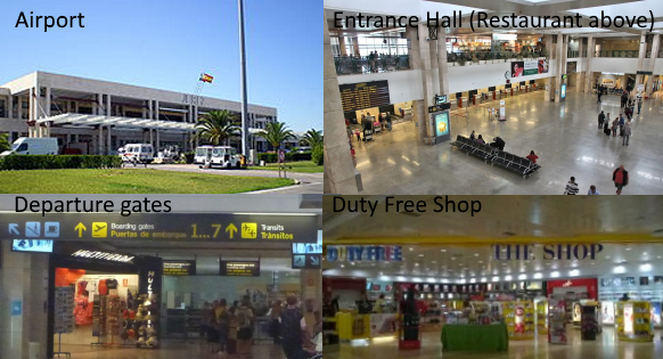 Jerez Airport
Jerez Airport Pros – small airport conveniently sited with good access to the Spanish motorway system
Cons – only one regular direct service from the UK (Ryanair via Stansted); limited facilities.
Aeropuerto de Jerez is one of my preferred airports into when I fly to Spain as it's only 45 minutes from my base in Alcala de los Gazules. The main drawback to flying here is that Ryanair is the only UK operator that uses the airport which can obviously be limiting. There are indirect flights via Madrid and Barcelona but this pushes up both cost and travel times. There is now a railway station serving the airport on the main Cadiz-Jerez-Seville line but services are very infrequent and, inexplicably, only by the Cadiz-Jerez shuttle. Taxis into Jerez tend to be pricey but there's also an irregular bus service. The smallness of the airport means that queues are usually shorter than at busier airports and baggage less often delayed. On the other hand it has fewer facilities (one very indifferent a restaurant, a small shop and a coffee bar landside and a small 'duty free' shop and a couple of places to eat airside). It has half a dozen or so car hire companies (e.g. Alamo, Goldcar, Enterprise, Europcar, Firefly, Goldcar, etc) some of which have booths 'airside' (as well as landside) allowing you to sort out your rental whilst you wait for your luggage. Sixt & Hertz are off-site but well served by a courtesy bus. Once you've picked up your hire car then it's only c3.5 km to the NIV/A4 which has excellent links north (via the E5) and south (via E5/A381) which means its only c90mins mainly along generally lightly used motorway class roads to Tarifa.
There's a wealth of good birding sites within 35 minutes of the airport including Mesas de Asta marsh (15 mins), Laguna de los Tollos (20 mins),Lagunas de Puerto de Santa Maria (25 mins), Laguna de Medina (25 mins) and Bonanza saltpans (35 mins) which means you can be birding not long after landing.
Pros - new airport conveniently close to migration hotspots used by Monarch (Gatwick, Luton & Manchester), Easyjet (Gatwick, Bristol & Manchester) & British Airways (Heathrow)
Cons – crossing the border can cause delays and at times long queues build up. In windy conditions flights may be diverted to Malaga. Not a good place to land for nervous fliers.
Dominated by the 'Rock' and with a runway projecting into the sea, the airport is often listed, unfairly in my view, amongst the world's most frightening. Since my wife is a nervous flier, I've not flown into Gibraltar many times although I have picked up/dropped off people there more often. The newly built airport buildings are a huge improvement on the cramped predecessor. The big drawback is the possibility that high winds (not unusual) will cause a diversion to Malaga. When this happens passengers are bussed back to Gibraltar (or, if departing, to Malaga) which often causes delays of two hours or more (c90 mins journey time plus other delays). Fewer hire car companies are based at Gibraltar (Europecar, Goldcar & Keddy) than other destinations so it may be harder to get a bargain. Even when Spanish authorities aren't being 'difficult', there may be long queues for cars leaving and entering Gibraltar (esp. at peak times). In the past at least some hire companies were based just over the border in La Linea and, since people on foot are subjected to delays much less often, walking across the border (c10 mins) to pick up your car could actually be quicker. Once you've picked up your hire car then after negotiating the single carriageway suburban roads of La Linea for c10 mins takes you to a dual carriageway (CA 34) and a few minutes later onto the coastal motorway (A7). Buses run from La Linea to Malaga, Algeciras and Cadiz which are all linked to the Spanish rail network. If you're unable to drive then you can access Tarifa via Algeciras bus station
Gibraltar itself is a well known raptor watching site although many of the small birds taken for granted on the Spanish side are very scarce indeed (e.g. Crested/Thekla Lark and wetland species). If you intend to do most of your birding in Gibraltar then it's not worth hiring a car since it can be very congested and buses/taxis/cable car will get you to most places. Apart from the Rock itself, the nearest birding sites include Palmones estuary (25 mins), Punta Secreta (35 mins), Castellar de la Frontera (35 mins), Marchinella (30 mins), Los Alcornocales (20-30 mins) and La Janda (1 hr). Tarifa is about 45 minutes from La Linea.
Pros – a medium sized with better facilites than Jerez airport conveniently sited with good access to the Spanish motorway system
Cons – more distant from main birding sites along the straits; over 2 hrs to Tarifa (2 20)
Despite considerably further from my base in Alcala de los Gazules than Aeropuerto de Jerez (90 mins vs 45), on balance, Aeropuerto San Pablo (Seville) is my preferred airport to fly into. It is served by EasyJet & Ryanair via Stansted & Gatwick. The airport itself is large enough to have decent facilities but not too large to be very crowded and busy. It is well positioned on the A4 Cordoba road so is convenient if you plan to look for Spanish Lynx in Andujar. Unfortunately, to reach the E5 which takes you south to Cadiz province you need to skirt Seville on a ring road that can be very busy and, at peak times, congested. Hopefully, once the SE 40 (to the east of the airport off the A4) connects to the N IV near Dos Hermanos the route south will be far less congested and a couple of minutes quicker. (This link has been long delayed but the earthworks for the last 7 km are now in situ). Tolls on the motorway are c8€ (one way). A regular bus service runs from the airport to the railway and bus stations in Seville which have links to most of the larger cities.
The primary reason I like flying into Seville is that, if your flight arrives fairly early in the day, it makes a detour via Osuna feasible (1 hr) on your route south. This is the best site in the area for Great Bustard and Black-bellied Sandgrouse (absent further south) and one of the best for Roller and Little Bustard. There are no good birding sites near the airport but thanks to the motorway connection if heading south a minor detours off route takes you to Laguna de Mejorada (30 mins) for Rufous Bushchat and Laguna de Tollos (70 mins) whilst a longer detour off your route takes you to the famous wetland site Brazo del Este (45 mins)
Pros – a large modern airport with excellent facilities served by all the major UK airlines with direct flights from more than a dozen UK airports and elsewhere in Europe
Cons – at peak periods there can be long queues at passport control, for hire cars, etc. Most birding sites a longish drive (c1hr 50 to Tarifa).
Being served by so many carriers (e.g. EasyJet Monarch, Ryanair, British Airways, etc) from so many regional airports (Birmingham, Bristol, Cardiff, Doncaster, Edinburgh Gatwick, Leeds, Liverpool, Luton, Manchester Newcastle, Southampton & Stansted), Malaga is the most convenient choice for many travellers despite being almost two hours from Tarifa and other prime sites. Another downside is that queues at passport control and for hire cars (esp. in peak periods) can be long and bargain flights seem harder to come by off-season when smaller airports are struggling for trade. All the major hire car companies (and several minor ones) operate out of Malaga but be warned that some of the lesser well known ones have inconvenient restrictions on car use (e.g. returning the car to them if you do in excess of acertain milage for a replacement vehicle). Being close to the toll road (AP7) means you can soon be on your way towards Tarifa and the Straits. This road is much less congested (apart from around the airport and a couple other sections) and faster than the notoriously busy (and dangerous) coastal road the A7/N 340 so the tolls (10€ one way) are money well spent. Malaga has excellent bus and rail connections to the rest of Spain.
Although most main birding sites are rather distant (with Fuente de Piedra a 50 mins drive away being one of the nearest), Malaga airport has a little gem, the Guadalhorce reserve, on its doorstep as it's less than ten minutes by car. However, the high incidence of thefts from cars makes this a risky place to visit with a car full of holiday luggage. Parking away from the immediate vicinity of the reserve near centres of activity (e.g. the school, restaurants, etc.) may help. En route (after c1hr 20 mins) you pass close to the Sierra de Utrera (Manliva) so a short detour here can be worthwhile for species difficult to see around Tarifa (e.g. Bonelli's Eagle & Black Wheatear).
Taking the train to southern Spain may be more environmentally friendly but is not a good option if time is limited as you'll need at least one stopover en route (two if you want a leisurely journey). Up front costs are also higher even before you add the expense of food and overnight stays. However if, like me, you enjoy travelling by train (always more enjoyable than flying) then it's worth doing the journey at least once. For details see the excellent Man in Seat 61 website - http://www.seat61.com/Spain.htm#London-to-Malaga-and-Seville It's a great, and very relaxed, way to get a feel for the Spanish countryside. You'll see fewer birds than when you drive but a lot more than if you fly! Although when we did the journey via Valencia and Granada I had my first ever Black-bellied Sandgrouse from the train near Osuna.
If doing the whole journey by train is a bit too much, then flying into Madrid and then taking the train south can be an attractive option. The Metro between Madrid airport and Madrid Atocha railway station takes about 35 minutes (one change). An excellent, modern fast train whisks you to Seville in 2½ hours (with Jerez another 1 hr 20 mins and Cadiz a further 20 minutes again). Fares can be surprisingly reasonable so if you get a cheap flight to Madrid it needn't be too expensive overall. I've done it once carefully scheduling for an early arrival in Madrid, a leisurely lunch at Atocha station and arrival in Seville in the late afternoon. Unfortunately, this was in summer 2009 when ETA bombings in Majorca caused huge security delays so we arrived more than two hours late but, thanks to a lunatic drive in a taxi, we got across Madrid in a record 20 minutes catching the train with minutes to spare. Hence I spent most of the journey south recovering from lugging two heavy cases through the airport!
I've never attempted to drive to Spain from the UK but then I'm not overfond of driving (and particularly not with the steering wheel on the 'wrong' side of the car!). Note too that, unless you intend to stay in Spain for an extended period, then flying and hiring a car is probably the cheaper option. It's about 23 hours driving time (all but two hours on motorways) from Calais to Tarifa which should cost c124€ in tolls and 220-300€ in fuel (2016 figures). The AA recommend you drive no more than 8 hours a day and take a break every three hours but remember driving on the 'wrong side' of the road can often be more tiring. Hence although some drivers do the drive in two days (with a single overnight stop), it's safer and more sensible (even with several drivers) to take at least three days with two or more overnight stops. Unless you intend to stay in Spain for an extended period then flying and hiring a car is probably cheaper.
A popular alternative is to take the car ferry to northern Spain. Brittany Ferries operate between Portsmouth (Santander & Bilbao) and Plymouth (Santander only) and take 20-24 hours. This cuts the driving time by about half (c12 hrs with c11 hrs on motorways) and the costs (2016) to about 28€ in tolls and 100-150€ in fuel (although the journey from Santander is marginally shorter and less expensive in tolls). You also have the chance of seawatching or whale watching en route. I know a few drivers who've done the drive across Spain in one go but given the comments above (and bearing in mind that few get a decent rest on a ferry) it's far safer (and more pleasant) to break the journey and stay overnight at least once. The ferry isn't cheap and the fare structure varies by season and size of car (see http://www.brittany-ferries.co.uk/). However, once you factor in the cost of a Channel crossing, savings in fuel and tolls and the need for fewer overnight stops then the price is competitive.
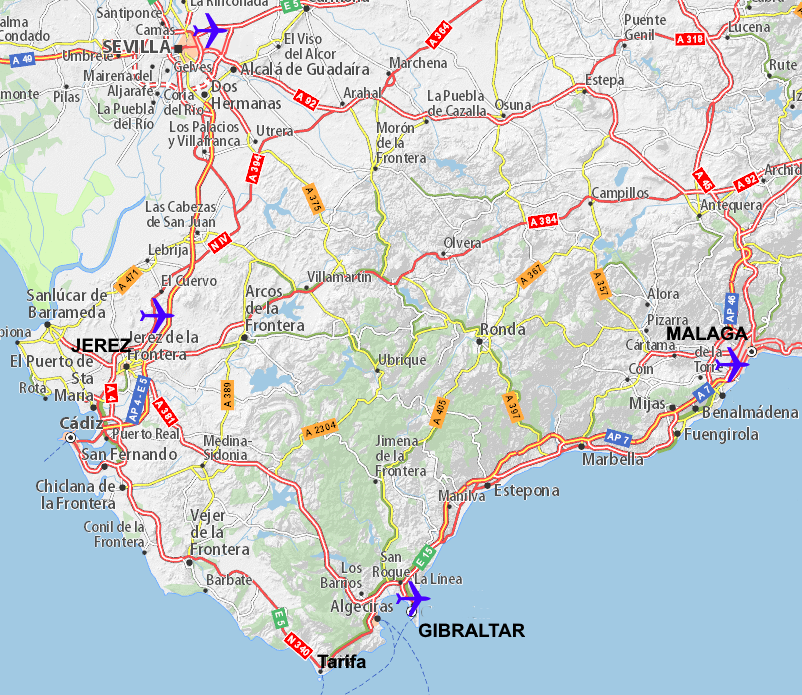
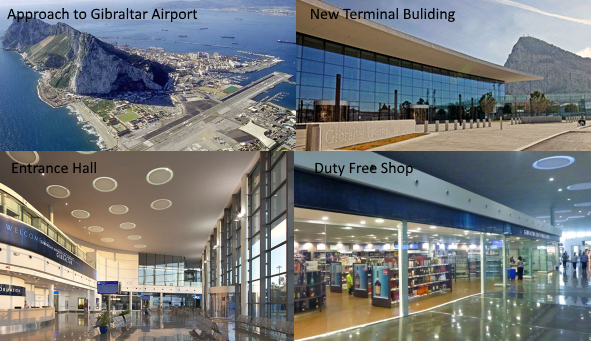
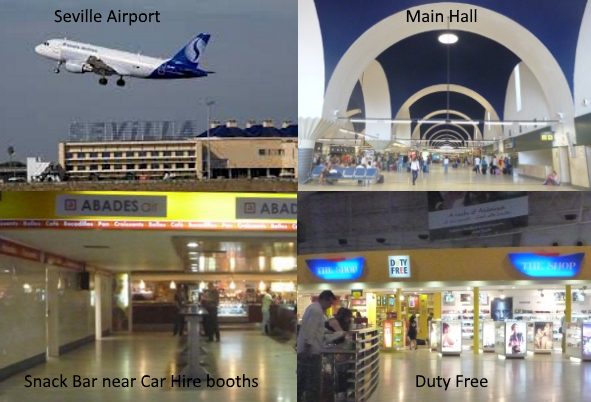
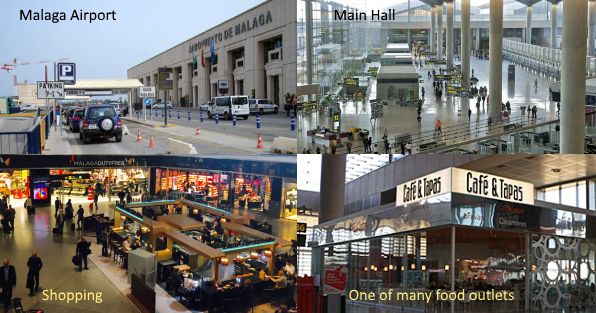

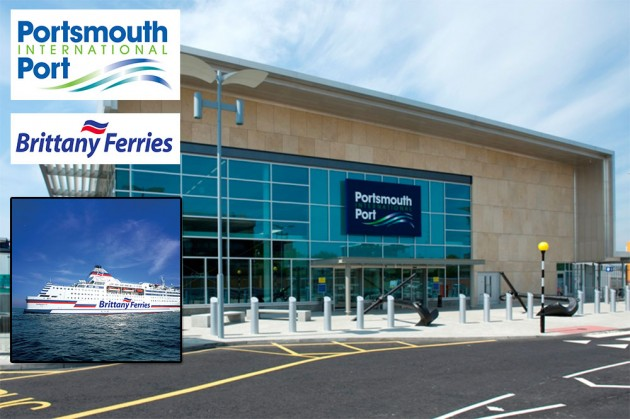

 RSS Feed
RSS Feed
